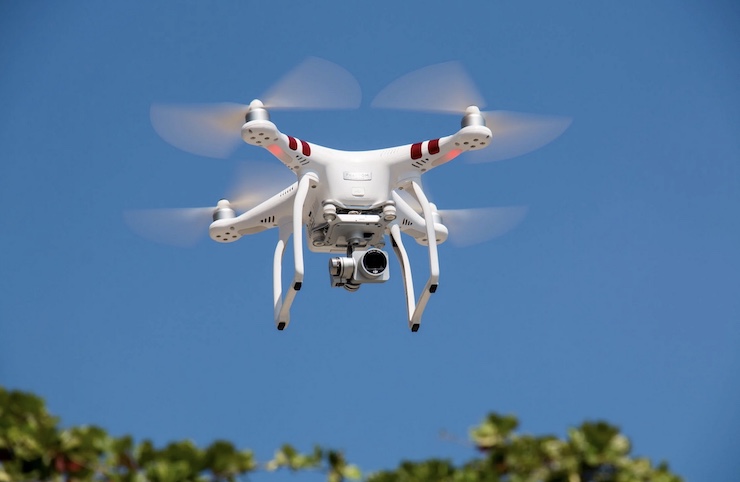“Cooperative Federalism” in Drone Development is Inevitable, Experts Say

Is the federal government exclusively empowered – through the FAA – to regulate access to low-altitude airspace above private commercial and residential property? One frequently hears this argument, especially from drone industry advocates seeking to promote and expand the use of drones to reduce their labor and operational costs and to enhance safety. But as a practical matter, if not legally, the jurisdictional issue is more complex.
Over the years, many states and localities have passed laws and ordinances over the years to restrict drone overflights, ostensibly to ensure the safety and privacy of their citizens. Many of these laws have been challenged and some overturned, pending appeal. For example, in late 2019 a federal court ruled that Texas’ 2013 “No Fly Zone” law, originally passed in 2013, and amended in 2017, was unconstitutional after a coalition of media organizations sued the state, arguing that the law violated their right to free speech and freedom of the press.
However, courts don’t necessarily rule all of these state or local laws out of bounds – only those parts that seem to go too far. Ultimately, it’s a question of balancing different stakeholder concerns and fashioning laws that are flexible and sensible adapted to specific scenarios. It’s not always clear how to do that, and as a result, current jurisprudence, still in its infancy, is evolving.
Even a local ordinance banning drone overflights of beaches and tourist spots can give rise to competing interpretations. In Rhode Island, a state historically unfriendly to drones, one small town passed just such an ordinance, ostensibly to protect beach-goers from being filmed for lurid purposes but also to prevent undue noise from low-flying aerial aircraft. The law as currently stated is sweeping in its language, and would prohibit drone beach overflights, even those conducted at high altitudes for purely scenic purposes.
Other Rhode Island beach towns have refrained from passing such ordinances. Police in Billings, for example, say they use their own judgment: a drone that hovers in place over sunbathers at a low altitude would be considered a “trespass nuisance,” while high-flying aircraft, even those with telescopic high-resolution camera imaging, probably wouldn’t be. But the police response might still depend on whether someone complains – and how loudly.
The FAA still claims – as a matter of principle and broad federal law – an exclusive right to regulate the nation’s airspace, including airspace above private commercial and residential property, regardless of the altitude. In theory, a drone hovering in place over someone’s property for several minutes enjoys the same airspaces right as a drone delivering a package and speeding by and over that property for just a few seconds. But the FAA recognizes the difference and has sought to articulate a standard of indue intrusion,
Critics say the FAA’s standard is too vague and leaves too much room for privacy invasions unrelated to the flow of commerce or potential emergencies. Businesses and homeowners that feel intruded upon are free to report the offending drone to local authorities, who may well follow up. But actually tracking down casual offenders is beyond the capacity of most local law enforcement agencies.
At the broad policy level, the FAA and most state and local authorities are eager to expand commercial and recreational drone activity on behalf of businesses and residents alike. The term “cooperative federalism” has been coined to describe the need for all stakeholders to collaborate in the creation of convergent agendas and to avoid unnecessary conflicts and costly litigation.
For example, granting drones relatively free access to fly over existing roadway systems and to avoid private property when possible has become a broad consensus position but there is still disagreement over how much free access on either side of those roadways might be permitted. Others have proposed granting more formal airspace rights to landowners that would allow them to lease their airspaces to commercial entities for a fee. Alternatively, landowners could be mandated by governments to allow airspace access – through a kind of drone “eminent domain” claim – but still compensated for their cooperation.
The Virginia-based Mercatus Center, which ranks all 50 US states based on their “readiness” for drone commercialization, finds that states diverge widely in their willingness to engage in the necessary policy and legal development to push the industry forward. States like Oklahoma, North Dakota, Texas and North Carolina are among the most drone friendly, with state offices eagerly promoting drone industry development, while Mississippi Arkansas, South Carolina and aforementioned Rhode Island are among the least friendly – with few drone -related jobs and stakeholders relatively disengaged from the process.
What does the future hold? Given the rapid development of drone technology and the demands of global competition, and increasing pressure from drone businesses and hobbyists nearly everywhere, more ventures into “cooperative federalism are inevitable, policy experts say. The overall national trend overall is toward more acceptance of drones, as even late-adopting states begin to recognize the enormous benefits that the drone industry has to offer them.
|